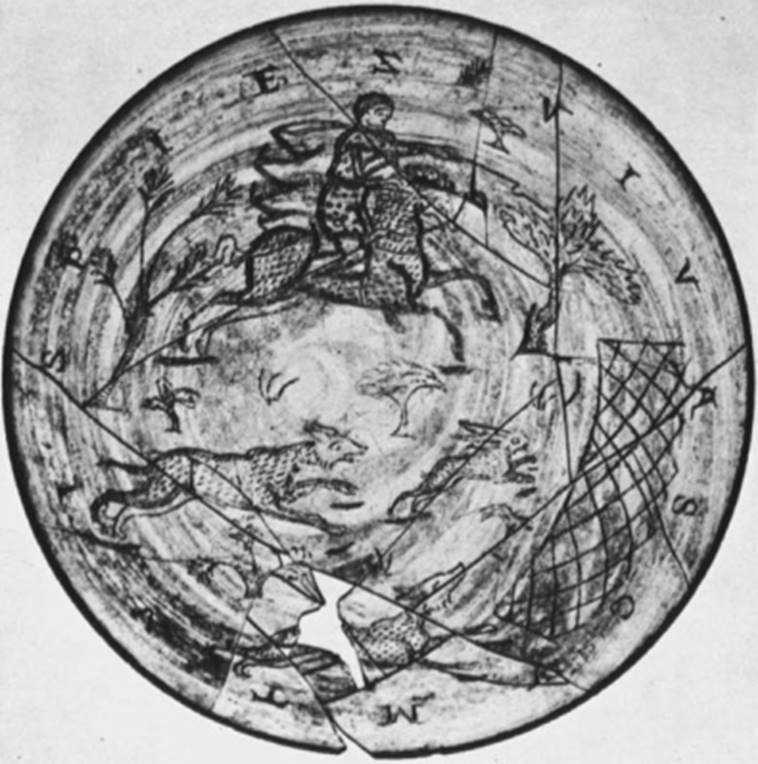Wint Hill bowl. Cologne (?), mid-4th century. Greenish glass
This glass bowl is pieced together from seventeen large, and numerous small fragments. It was made by cutting a section from a large blown globe, and filing down the lip. The weathered surface is the result of soil corrosion.
The scene engraved on the outside is a hare hunt. The mounted hunter, whip in hand, spurs on two large dogs chasing the prey toward a net. The open landscape is indicated by two trees, several small bushes and some tufts of grass. The line drawing is augmented by a series of short strokes to emphasize some contours. It is a rather loose, unrefined style, though highly animated and vigorous. This and similar glassware were most likely meant for display rather than use.

The configuration of the hunt scene relates it to a large group of monuments in many media. A remarkable similarity exists between this and the Hellenistic gold-glass bowl from Tresilico (Harden, 1968, p. 32, no. 4) and the Alexander plate (no. 79), indicating a very long tradition behind such representations.
The inscription, a mixture of Latin and Greek, etched into the underside of the bowl, reads vivas cvm tvis pie s (“Live with yours, drink that you may live"). It was the standard formula for good wishes and toasts on gold glass.
This hunt bowl has been recognized by Harden (1960) as a member of a stylistically and technically related group of glass objects. The most idiosyncratic elements are the shaded contour lines and the indication of pelts by short jabs or V- marks, the style of the letters, and the similarity of drawing of trees, animals, and figures. The technique, too, of freehand engraving with a hard stone burin, though not exclusive to this group, is another unifying factor.
In addition to hunting scenes, this group includes mythological (no. 113) and biblical themes (nos. 378, 401). Despite the differences in subject matter, the style and technique point to a common workshop and a contemporaneous production, which, because of the Christian iconography could not be earlier than the first quarter of the fourth century. This dating is supported by archaeological evidence whenever pieces of this group have been found or excavated in a datable context.
Despite the variety of find-spots, analysis of the distribution indicates Cologne, an important commercial center with an especially well documented glassmaking industry (Fremersdorf, 1967), as the center of production.
Excavated in 1956 by the local archaeological society at Wint Hill, Somerset, England. Bibliography: Harden, 1960.
Date added: 2025-07-10; views: 45;
